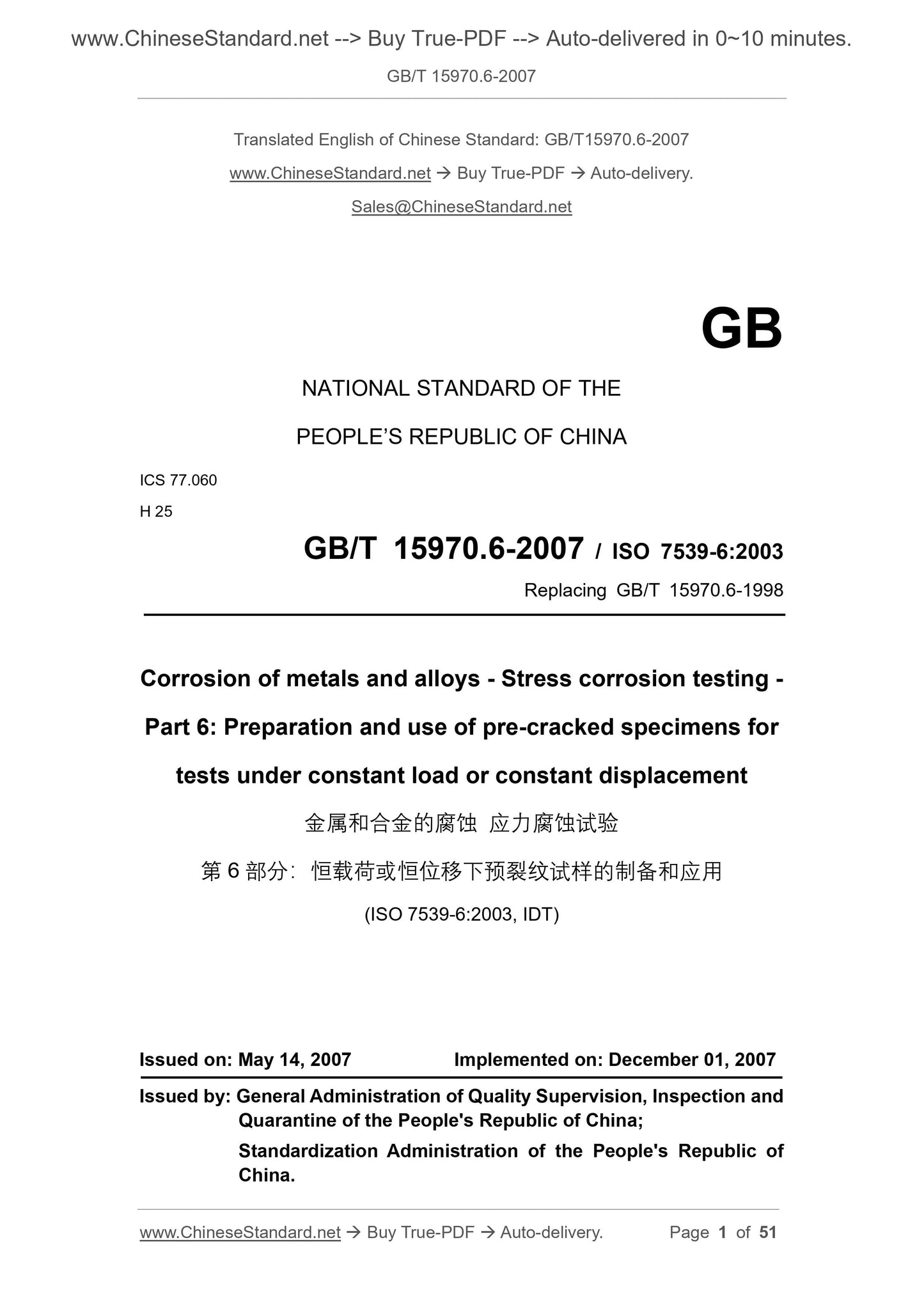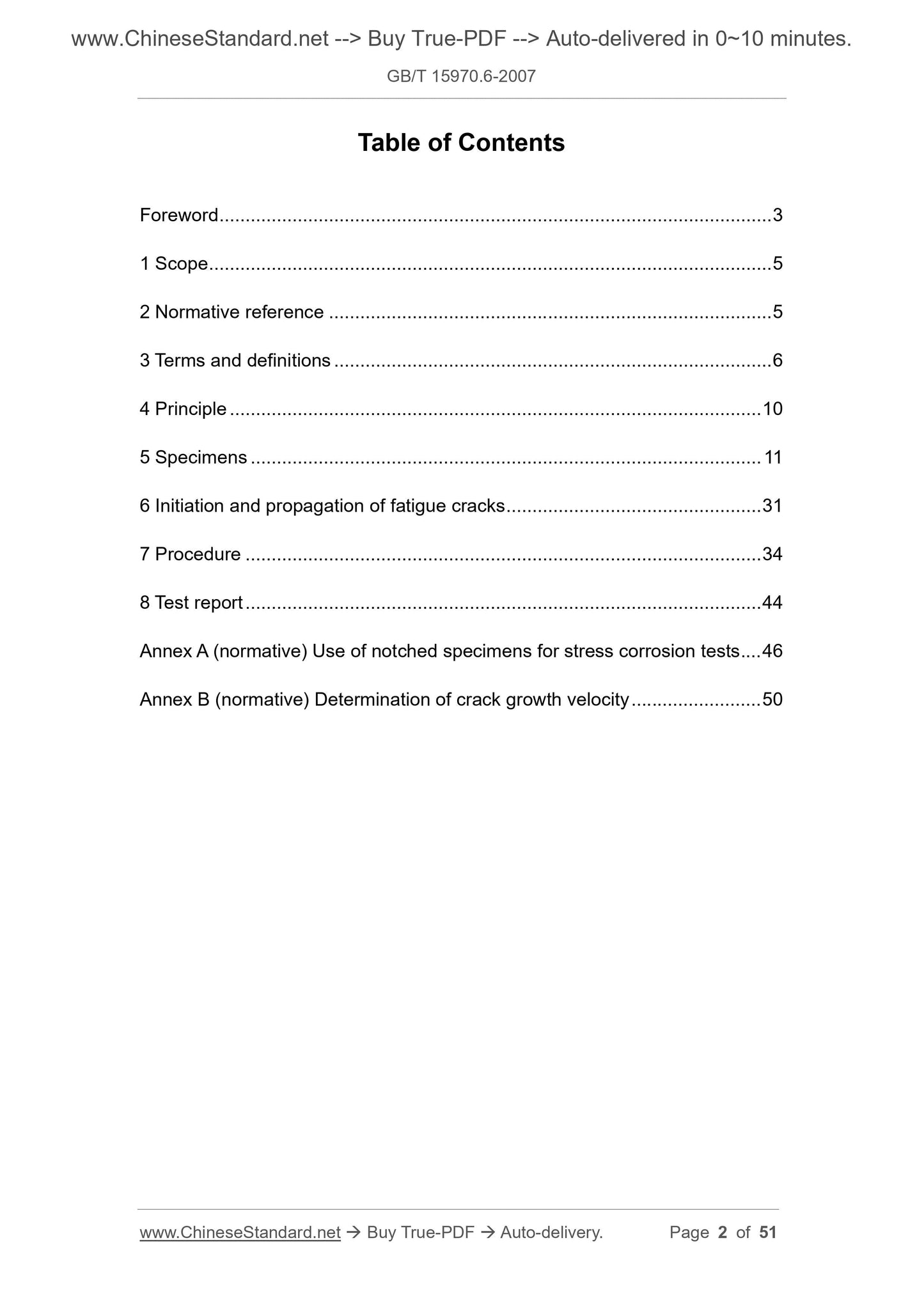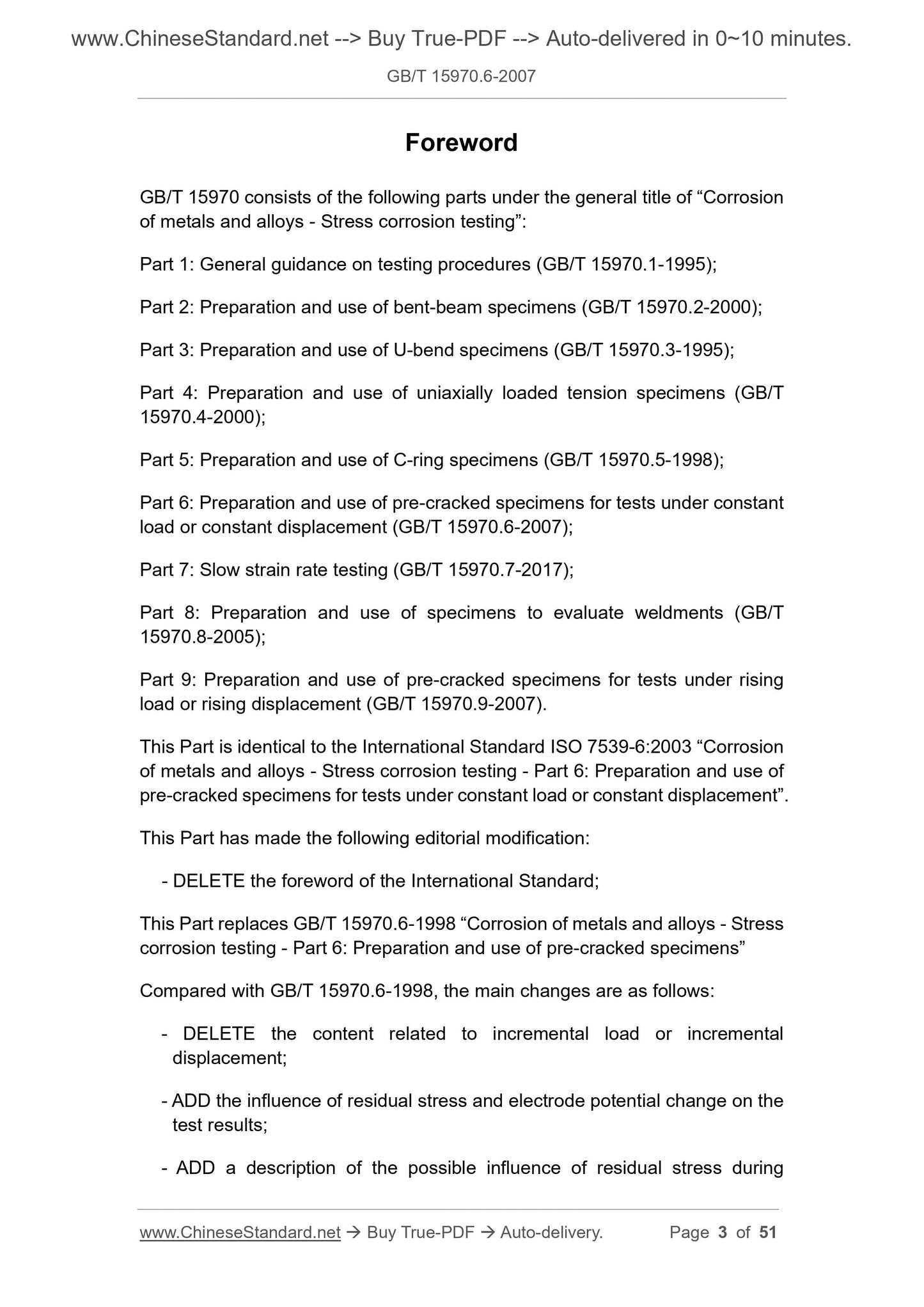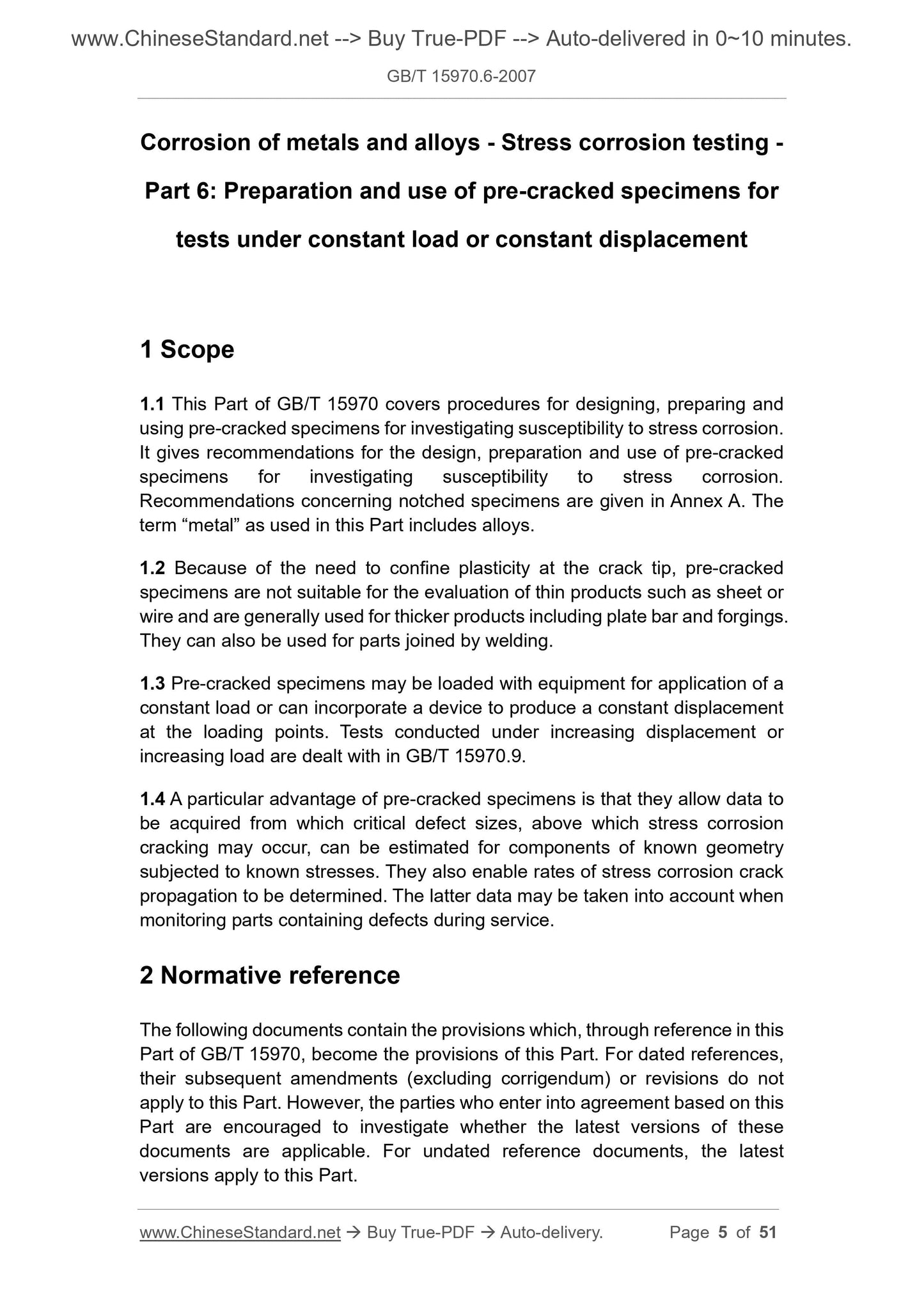1
/
of
4
www.ChineseStandard.us -- Field Test Asia Pte. Ltd.
GB/T 15970.6-2007 English PDF (GB/T15970.6-2007)
GB/T 15970.6-2007 English PDF (GB/T15970.6-2007)
Regular price
$180.00
Regular price
Sale price
$180.00
Unit price
/
per
Shipping calculated at checkout.
Couldn't load pickup availability
GB/T 15970.6-2007: Corrosion of metals and alloys -- Stress corrosion testing -- Part 6: Preparation and use of pre-cracked specimens for tests under constant load or constant displacement
Delivery: 9 seconds. Download (and Email) true-PDF + Invoice.Get Quotation: Click GB/T 15970.6-2007 (Self-service in 1-minute)
Newer / historical versions: GB/T 15970.6-2007
Preview True-PDF
Scope
1.1 This Part of GB/T 15970 covers procedures for designing, preparing andusing pre-cracked specimens for investigating susceptibility to stress corrosion.
It gives recommendations for the design, preparation and use of pre-cracked
specimens for investigating susceptibility to stress corrosion.
Recommendations concerning notched specimens are given in Annex A. The
term “metal” as used in this Part includes alloys.
1.2 Because of the need to confine plasticity at the crack tip, pre-cracked
specimens are not suitable for the evaluation of thin products such as sheet or
wire and are generally used for thicker products including plate bar and forgings.
They can also be used for parts joined by welding.
1.3 Pre-cracked specimens may be loaded with equipment for application of a
constant load or can incorporate a device to produce a constant displacement
at the loading points. Tests conducted under increasing displacement or
increasing load are dealt with in GB/T 15970.9.
1.4 A particular advantage of pre-cracked specimens is that they allow data to
be acquired from which critical defect sizes, above which stress corrosion
cracking may occur, can be estimated for components of known geometry
subjected to known stresses. They also enable rates of stress corrosion crack
propagation to be determined. The latter data may be taken into account when
monitoring parts containing defects during service.
Basic Data
| Standard ID | GB/T 15970.6-2007 (GB/T15970.6-2007) |
| Description (Translated English) | Corrosion of metals and alloys -- Stress corrosion testing -- Part 6: Preparation and use of pre-cracked specimens for tests under constant load or constant displacement |
| Sector / Industry | National Standard (Recommended) |
| Classification of Chinese Standard | H25 |
| Classification of International Standard | 77.060 |
| Word Count Estimation | 35,376 |
| Date of Issue | 2007-05-14 |
| Date of Implementation | 2007-12-01 |
| Older Standard (superseded by this standard) | GB/T 15970.6-1998 |
| Quoted Standard | GB/T 15970.1; GB/T 20120.2 |
| Adopted Standard | ISO 7539-6-2003, IDT |
| Regulation (derived from) | National Standard Announcement 2007 No.5 (Total No.105) |
| Issuing agency(ies) | General Administration of Quality Supervision, Inspection and Quarantine of the People's Republic of China, Standardization Administration of the People's Republic of China |
| Summary | This standard specifies the design of pre- designed stress corrosion cracking susceptibility, preparation and the use of other content. Gives the design for the pre- study stress corrosion cracking susceptibility of the sample, preparation and use recommendations. Recommendation concerning notched See Appendix A. As used in this section the term "metal" also includes alloys. Because at the crack tip elastic restraint required to maintain state, so is not suitable for evaluation of pre- cracked specimens such as fine or thin sheet or wire and other materials. Usually only applicable to the evaluation as thick, rods and forgings thicker or coarser material. Pre- cracked specimens are also suitable for welding pieces. Available pre- cracked specimens loaded constant load device, or the device can produce a constant displacement load, increasing load and increasing displacement of the test are described in force 15, 970. 9 points in GB/T. Highlight the advantages of pre- cracked specimens are: data from the side can be calculated from the known geometry and components to withstand the stress limits of known defect size. If the defect size exceeds a critical value, it will cause stress corrosion cracking. Pre- cracked specimens can also be used to browse the expansion rate of stress corrosion cracking. When monitoring is being used defective parts, we can consider the recent data. |
Share







